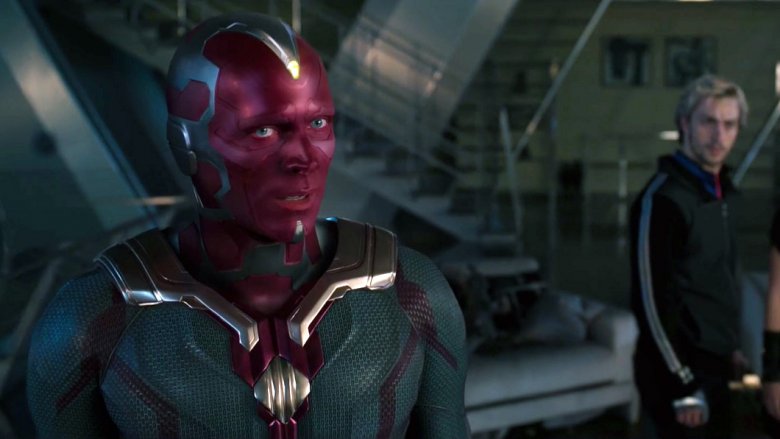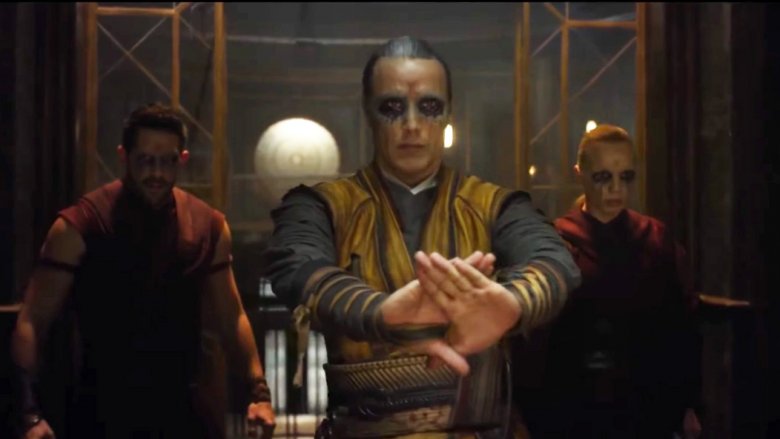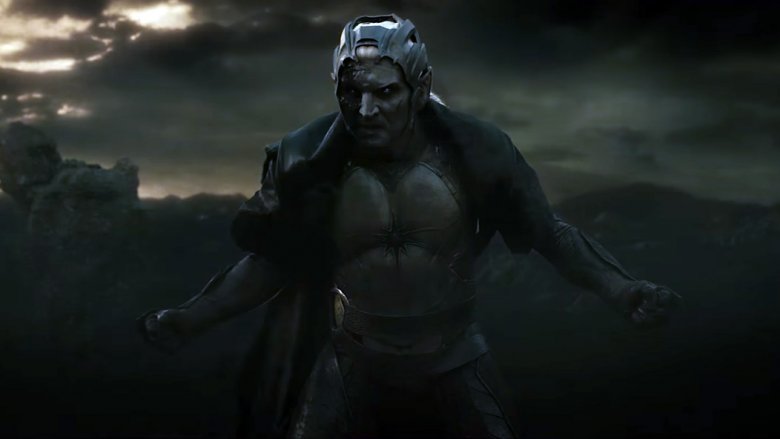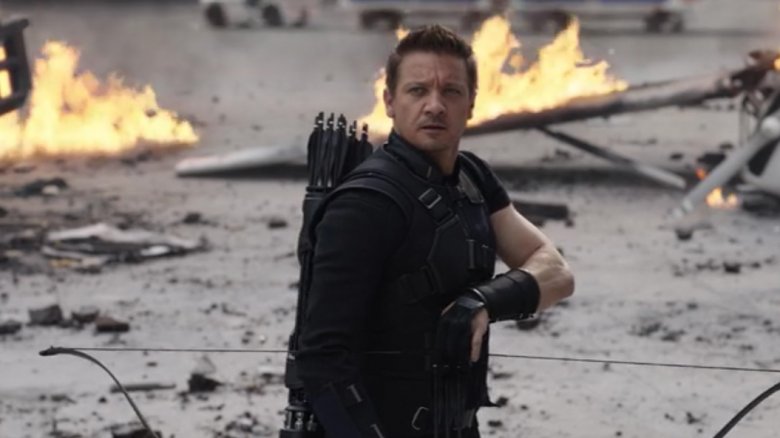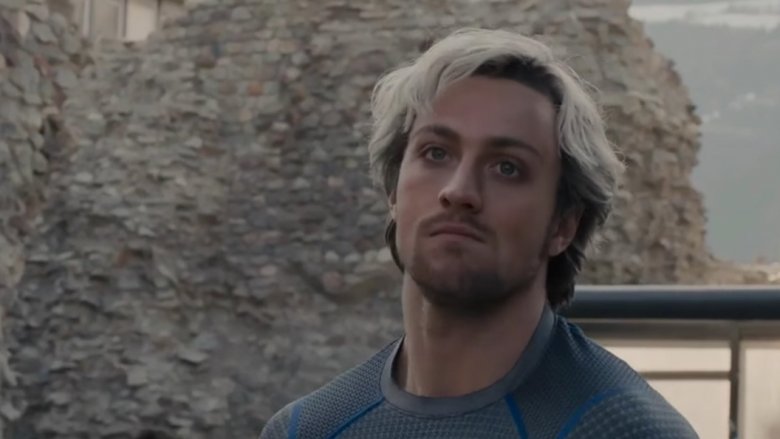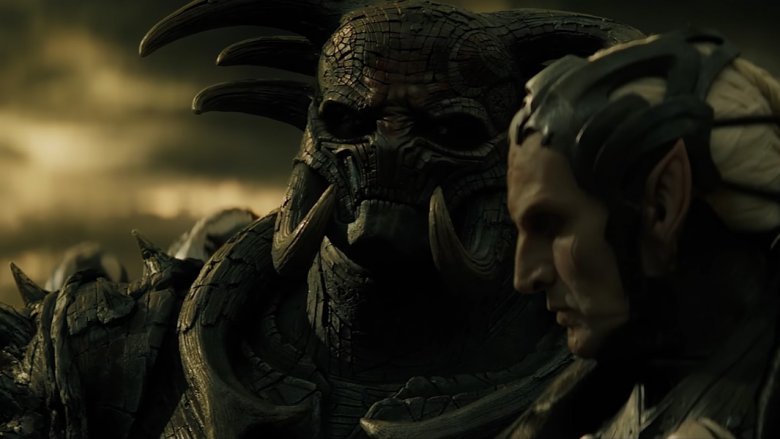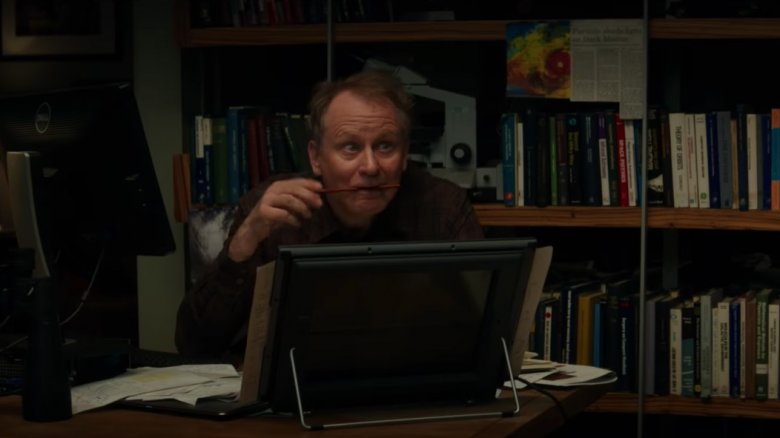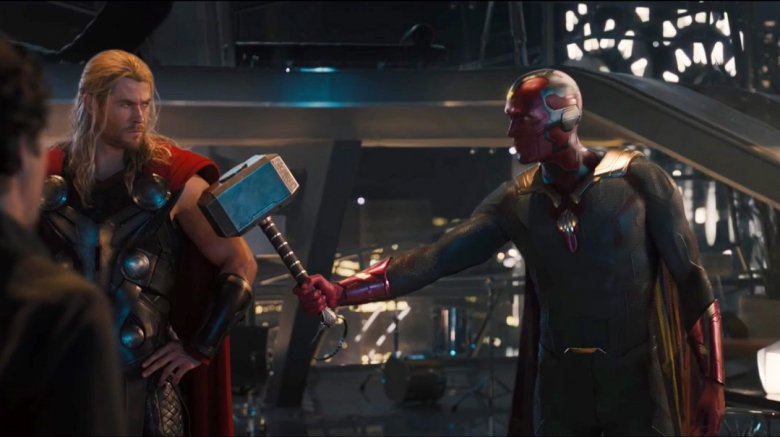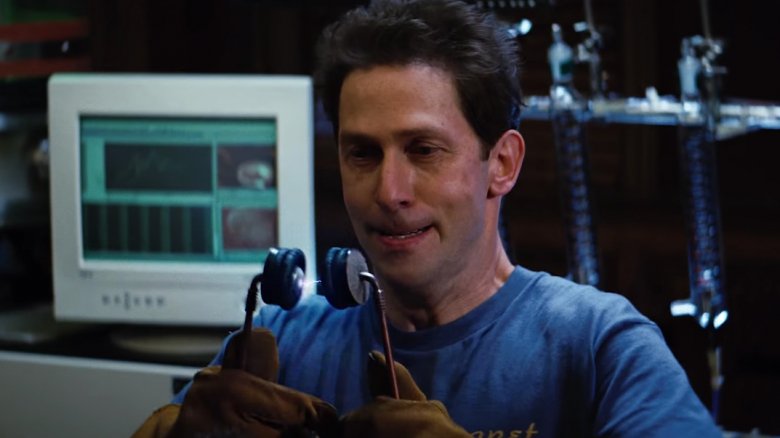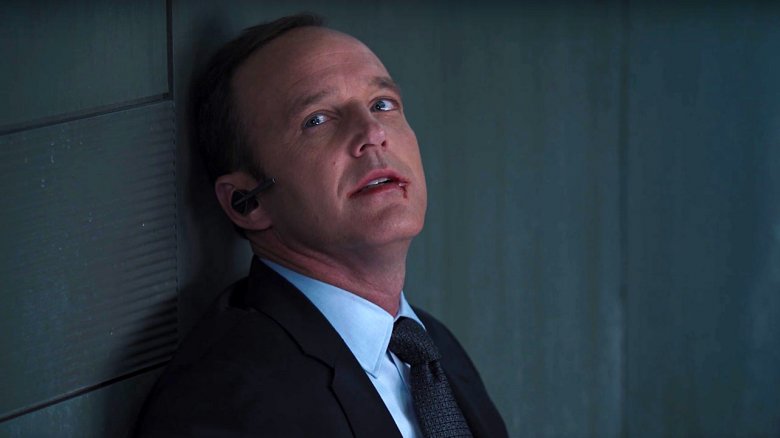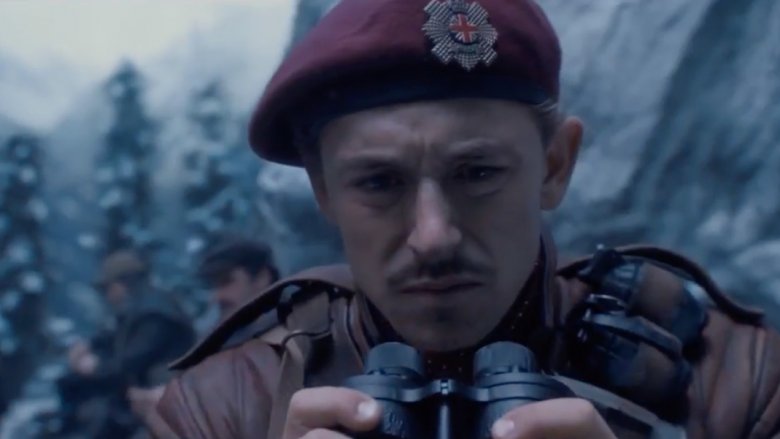Marvel Cinematic Universe Characters Who Are Useless
Seventeen films in and showing no sign of slowing down any time soon, the Marvel Cinematic Universe has built an incredible saga full of epic adventures, thrilling action, and unforgettable characters. There are amazing heroes like Thor, Captain America, and Spider-Man, breakout supporting cast members like Sharon Carter or Peter Parker's buddy Ned, and the villains? Loki might be the breakout, but who would've ever expected the Vulture to be one of the best bad guys of the year?
With so many movies and so many characters, not all of them are going to be great, and a handful are going to wind up being utterly useless. From villains that just didn't click to minor characters who have no reason to be there, here are our picks for the characters that the MCU might just be better off without.
Kaecilius
Doctor Strange had a lot going for it: a dynamic visual style that twisted reality around its heroes, a premise that actually explained why people wouldn't notice full-on magic wars going on around them, and they even managed to find a lead actor who, for all his faults, is actually angular enough to look like he might've been drawn by original Dr. Strange artist Steve Ditko. Even better, while most of the movie follows a pretty standard plot that feels like Iron Man with technology swapped out for magic, it builds to a climax that's genuinely clever, breaking out of the formula and allowing our hero to beat an all-powerful inter-dimensional hell monster without just, for instance, getting really big and punching him.
Unfortunately, Dormammu isn't actually the villain for most of the movie. That dubious honor goes to Kaecilius, an obscure villain drawn from the comics, who serves as a sort of all-purpose stand-in for better Doctor Strange villains—including Baron Mordo, who is also in this movie. As a result, Kaecilius winds up just sort of filling space while we wait for more important characters like Dormammu to show up in the film, with the far more recognizable (to fans) Mordo being clearly set up for future films. Kaecilius' very existence raises the question of why we didn't just skip to those guys, which isn't exactly the reaction you want your main villain to provoke.
Also, while the visuals of the movie are its strongest selling point, Kaecilius' burned-out eyes look less like the horrifying price of dark magic and more like he watched a YouTube makeup tutorial on the smoky eye but couldn't really pull it off. While Mads Mikkelsen's effortlessly sinister quality is fully on display—the same thing that made him such a great foil for James Bond in Casino Royale—there's only so much he can do with an otherwise boring role.
Malekith
While we're on the subject of villains who just didn't work, we have Malekith. You may remember him as the villain of Thor: The Dark World, but let's be real here: it's way more likely that you forgot literally everything about him, up to and including the very existence of a Thor movie between the first one and the one where he has a gladiator fight in space with the Hulk.
In the comics, Malekith is a scheming mastermind bent on conquering Earth and claiming it as the new homeland for the Dark Elves of Svartalfheim. He hunts down the human guardian of the Casket of Ancient Winters—an impossibly powerful Norse artifact handed down through generations of the descendants of vikings—and, when he gets it, he comes pretty close to unleashing a new ice age on our planet. He even switches places with Thor's evil half-brother Loki, imprisoning him in a dungeon, while Malekith himself is nearly crowned king of Asgard! All thrilling story elements that would make for a great movie.
In the movies, he ... hm. Well, he wants something, right? We're trying to remember here. He tries to kill Loki, maybe? That seems right, but a lot of people try to kill Loki, so it's kind of hard to say. Look, we'll have to get back to you on this one.
Hawkeye
On the one hand, Hawkeye's not a bad character, and the movies have even managed to play up one of his defining traits from the comics, namely that he's the Avenger who's just a guy. Everyone else is standing there with magic hammers, vibranium shields, gamma rays, and whatever else, and he's got a weapon that's been around since the beginning of recorded history. It's even led to some pretty good moments and solid character beats for actor Jeremy Renner to have some fun with.
On the other hand, that has functionally rendered him useless for the rest of the team. Think of all the best Hawkeye moments in the MCU, and a pattern emerges that's built entirely on the idea that Hawkeye just pretty much does not need to be there. In the biggest fight in the MCU to date, when the Avengers split into two teams and throw down against each other in Captain America: Civil War, Hawkeye's major contributions include missing Iron Man with an arrow and casually introducing himself to Black Panther. Considering that he's taking the time to do said intro while people around him are growing to giant-size and destroying buildings with the power of Infinity stones, it's a pretty big indication that he knows he's not going to be affecting the outcome of the battle one bit. Black Panther even tells Hawkeye straight up that he doesn't care who he is, and, if he doesn't care, it's hard to figure out why we should.
The one big moment of character development that Hawkeye's been given over the course of four movies is the reveal in Age of Ultron that he has a secret family living on a farm somewhere, and that's just in there to set up up a fake-out where the audience thinks he's going to get a "he was two days from retirement" style death, only to have it happen to someone else. When your defining moment is that one time you didn't die, you probably didn't need to be there in the first place.
Quicksilver
As difficult as it might be to believe, there was a time when Quicksilver was in three movies in two years, with a pair of massive multinational media companies battling to be the penultimate purveyor of Quicksilver powers. And yet, for all that hard work, his appearance in the MCU is basically just to function as the less important half of "and the Scarlet Witch."
Despite some genuinely good super-speed effects, Quicksilver's death in Avengers: Age of Ultron was not only perfunctory, it was telegraphed a mile away by virtue of having Hawkeye be the obvious target. With the weird legal situation, and a setup that might as well have been a giant flashing neon sign letting you know there was a last-minute swerve coming up, it was pretty obvious that Quicksilver wasn't going to be making it to Phase Three, and that makes it awfully hard to get invested in him as a character.
Kurse
Kurse? He was part of Malekith's plan, right? For a movie about elves with spaceships trying to murder gods by punching them so hard that they land in other dimensions, the plot of The Dark World sure is hazy.
For Kurse, though, it's pretty straightforward: strong guy gets turned into stronger monster guy so that he can fight Thor, because even the infinite possibilities of fiction do not include a world where Christopher Eccleston is a threat to Chris Hemsworth in a fight. The Kurse of the movies is just some dude who stands next to Malekith, a dark lump of monster against a dark lumpy sky; without the bright popping colors of his original, and far more dynamic, comics design, it's easy to forget that Kurse is even in this flick.
Of course, we shouldn't be too hard on Marvel for straying from the source material of the comics in this case. If they were going to make a 100% faithful version of the character, they would've had to bring in the Beyonder too, and with that comes Thor's magic belt, Power Pack, and a whole host of stuff too detailed to to go into, much of which even includes Spider-Man.
Dr. Erik Selvig
Look, it's not like we're trying to use The Dark World as a punching bag here, but when you start talking about things that are pointless in the MCU, well, there are a lot of roads that lead back to this one. And one of them goes right through an exit called Dr. Erik Selvig.
In the context of the movies, he's Thor girlfriend Dr. Jane Foster's mentor, who gets possessed by Loki and then spends the two years between movies locked up in a mental hospital with Marvel's creator supreme, Stan Lee. That's interesting enough as plot lines for minor characters go, but by the time Selvig comes back, he's pretty unnecessary. There's already a mentor/student relationship between Jane and Darcy Lewis, and while Selvig is there to move the plot along with some techno-babble pseudoscience and a distinct lack of pants, there's no real reason why all the information he provides couldn't have come from Jane.
Vision
If Quicksilver showing up in three movies was surprising, then the Vision managing to get into even one was enough to raise a few eyebrows. Age of Ultron was, after all, a movie that was tasked with following up a billion-dollar blockbuster that saw a gathering of heroes fighting both a mad god and an invading alien army. Choosing to do that by introducing a robot with the ability to cry? It was definitely a surprise. Which isn't to say it didn't work out.
If nothing else, we got to wrap ourselves in the warm blanket of Paul Bettany's voice, and there might not be anything in the Avengers movies that's funnier than the sight of the robotic Vision just chilling out in a sweater. In terms of what he's been able to accomplish, however, he's not exactly batting a thousand. Sure, Vision helped defeat Ultron, but he also proved to be completely unable to keep the Scarlet Witch from exiting a room. And, as she was maybe a little too quick to point out, he was also terrible at making paprikash.
Even worse, the second time Vision goes into combat, he winds up blasting War Machine, a guy who's on his side, and winds up paralyzing him. With that in mind, Vision might actually be worse than useless. He's downright harmful to have around.
Samuel Sterns
Hey, remember how there was a Hulk movie in the MCU where the Hulk fought the Abomination? Remember how that movie also had Hulk uber-adversary The Leader in it? If the answer to one or both of those questions is "no," you shouldn't worry. That's actually pretty common. Say what you will about The Dark World, but at least we don't forget it exists for years at a time. And yet, it happened.
While the bulk of the action at the climax of 2008's Incredible Hulk was focused on the eponymous jade giant taking on Emil Blonsky in a sequence that involved the Hulk using smashed-up cars as boxing gloves (something that makes no sense but is definitely pretty awesome), Samuel Sterns (aka future villain, The Leader) managed to sneak in there as a scientist working on turning Bruce Banner's irradiated blood into medicine. Needless to say, this doesn't work out.
The appearance does, however, serve as an example of the very fine line between the kind of character seeding that has to be done in order to build a franchise and a universe, and cluttering your story up with characters just to have them in there. As it stands now, he feels like a character who was wedged into the story with a crowbar, but if the Hulk had gone on to star in two or three more solo adventures where he battled The Leader, we might think of him as one of the more important characters in the MCU. We also probably wouldn't have forgotten that his origin story involved getting Hulk blood into a cut on his forehead and then getting a hulked-out head though.
Phil Coulson
Before you start your angry letters, please understand that we are well aware that S.H.I.E.L.D. agent Phil Coulson became an unlikely fan favorite after his appearances in the first few MCU movies and that we like him just as much as you do. But we all have to come together and admit that he just doesn't do a whole lot. That is, after all, kind of his deal.
Clark Gregg's performance in Marvel's movies was so muted that it somehow became incredibly charismatic, with the actor making the most of a bunch of scenes where he stood around and quibbled over acronyms in monotone. Then, the one time he actually did attempt to do something, he was immediately killed, and his death was used to motivate a bunch of superheroes to, well, go be superheroes. As it turns out, even that part is a lie. The guy just doesn't get a whole lot done. Or at least, he doesn't get much done if you only watch the movies.
If you've been watching Agents of S.H.I.E.L.D., technically part of the MCU, you've seen Phil Coulson die, come back to life, get a robot hand, and straight up become a flaming skeleton Ghost Rider in a scene that makes us think that maybe we should be watching that show more often.
Lord James Montgomery Falsworth
In Captain America: The First Avenger, there's a really great scene where Cap recruits his team of Howling Commandos by freeing them from evil organization Hydra. And, frustratingly enough, one of them is Lord James Montgomery Falsworth.
"Wait a second," you may be saying, "there's nothing wrong with that! In fact, that's a great way to get a lot of those characters, like Dum Dum Duggan and Gabe Jones into the movie in a form that actually makes sense without just dropping names!" And you're right! The problem is that Falsworth wasn't one of the Howling Commandos. In the comics, Falsworth was a superhero in his own right: Union Jack.
If you're not familiar with him (and don't worry, he's a pretty obscure one), Union Jack was a patriotic hero from the U.K. who dressed up in a flag-patterned costume and dedicated his entire superheroic career to murdering Nazi vampires—and he never does this in the MCU! Seriously, why would you even introduce a character who fights Nazi vampires and then not have him do that? Sure, it might not have fit in with the events of First Avenger, but you can't really think the Agent Carter TV series wouldn't have benefited from at least one episode of murdering Nazi vampires, right?
There may have been bigger missed opportunities in the MCU, but we'd be pretty hard pressed to think of one.
